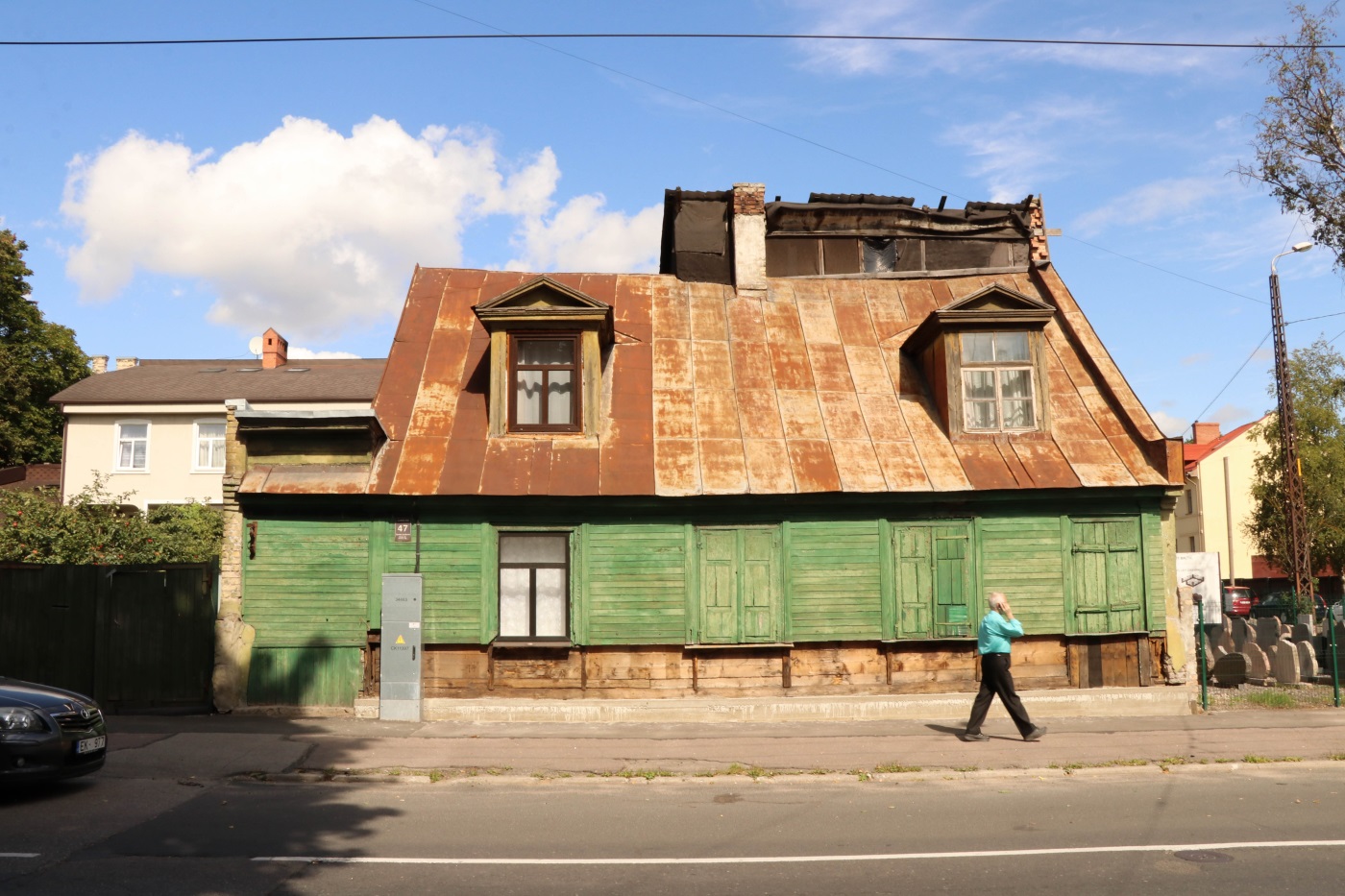Riga Ghetto
The Riga ghetto was created in the Maskavas Forštate area (Moscow suburb) during the occupation of Riga from 1941 to 1944. Almost all of the city’s Jews, who made up 10% of the population, were moved to the ghetto, and the fate of most of them was tragic.
This area is unique in that most of the buildings from that time have survived to this day, while other large Jewish ghettos of World War II – Warsaw, Krakow – were almost completely destroyed. The streets and buildings that have survived in Riga are a monument to that time and provide an opportunity to imagine what life looked like in the ghetto of World War II.

History
After fierce battles for the city in the summer of 1941, German troops occupied Riga. Just three days after the occupation, the Nazis, together with Latvian collaborators, burned the Great Choral Synagogue with the people in it and began anti-Jewish pogroms.
The Synagogue ruins remain on the Emīlijas Benjamiņas street.
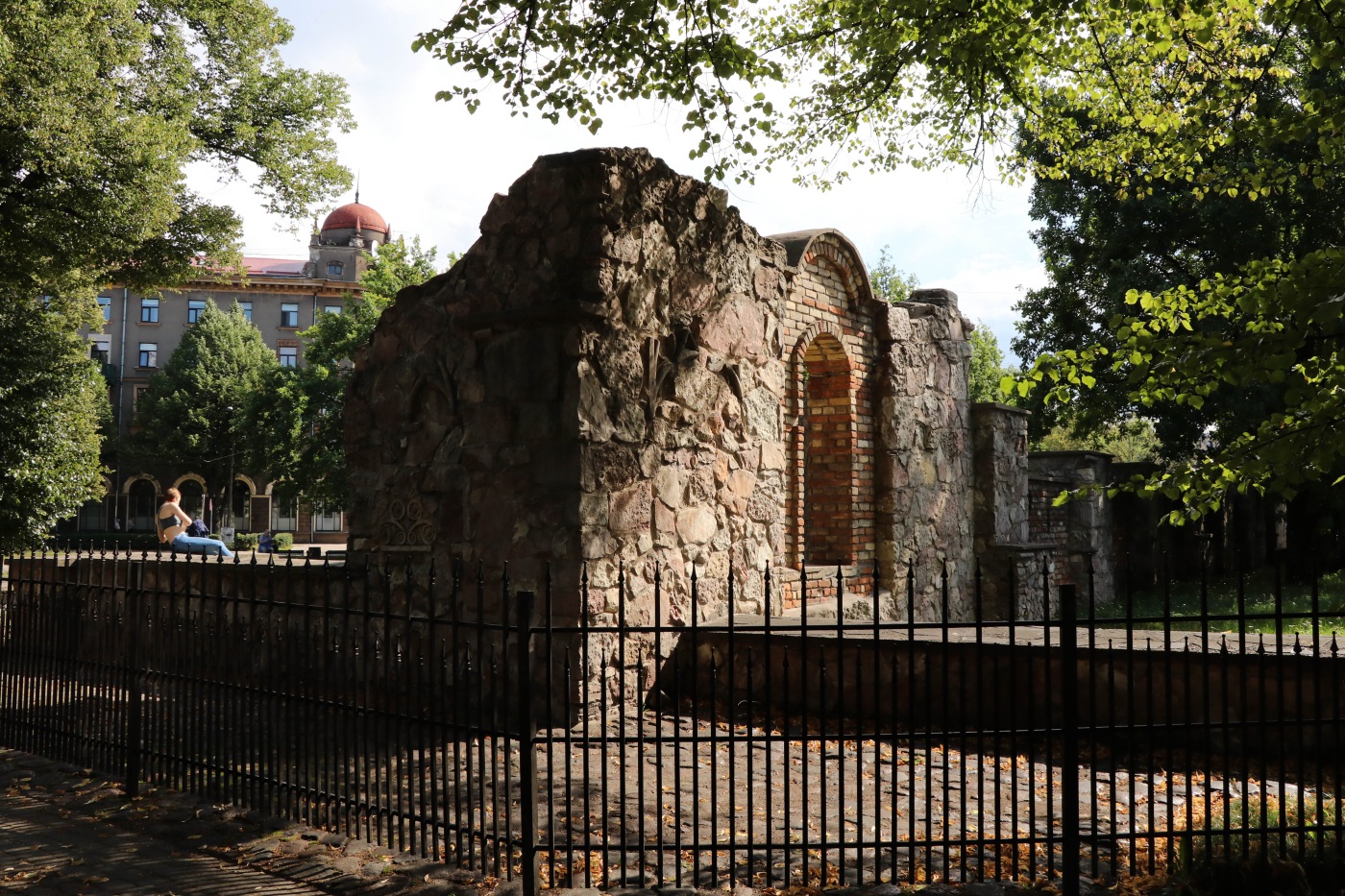

The decision was then made to create a Jewish ghetto and work camp. 30,000 Latvian Jews were evicted from their homes and their belongings were confiscated. All of them were relocated to an area not far from the city center – Moscow Forstadt, where no more than 13,000 people lived before. This territory was surrounded by a fence with barbed wire, and the rest of the residents of Riga were forbidden to communicate with Jews under threat of execution.
Swipe across the photo to see before and after.
Prisoners had no rights: they could only go into the city to work, but they were not allowed to walk on the sidewalks or use public transport. It was forbidden to bring food or any other things into the territory. Everyone was required to have a Star of David on their clothing. Each violation was followed by severe punishment, most often by execution.
People were shot and buried in the Old Jewish Cemetery. The cemetery was located on Līksnas st., 2/4, now there’s a park.

The ghetto had self-government, which was strictly controlled by the Nazis and collaborators. During its existence, there were several uprisings that were brutally suppressed.
The so-called Great Ghetto did not last long. A month later, all categories of people who were unable to work were selected: women, children, old people, disabled people – about 25,000 people in total. They were told that they were being transferred to another camp, but in fact they were being led to be killed in the Rumbula Forest.
The victims walked into the forest along the main street of the ghetto – Ludzas. Anyone who stumbled on the slippery road, walked too fast or too slow, was killed. After the prisoners were escorted out, the entire street was covered in dead people.
This is what Ludzas looks like now.
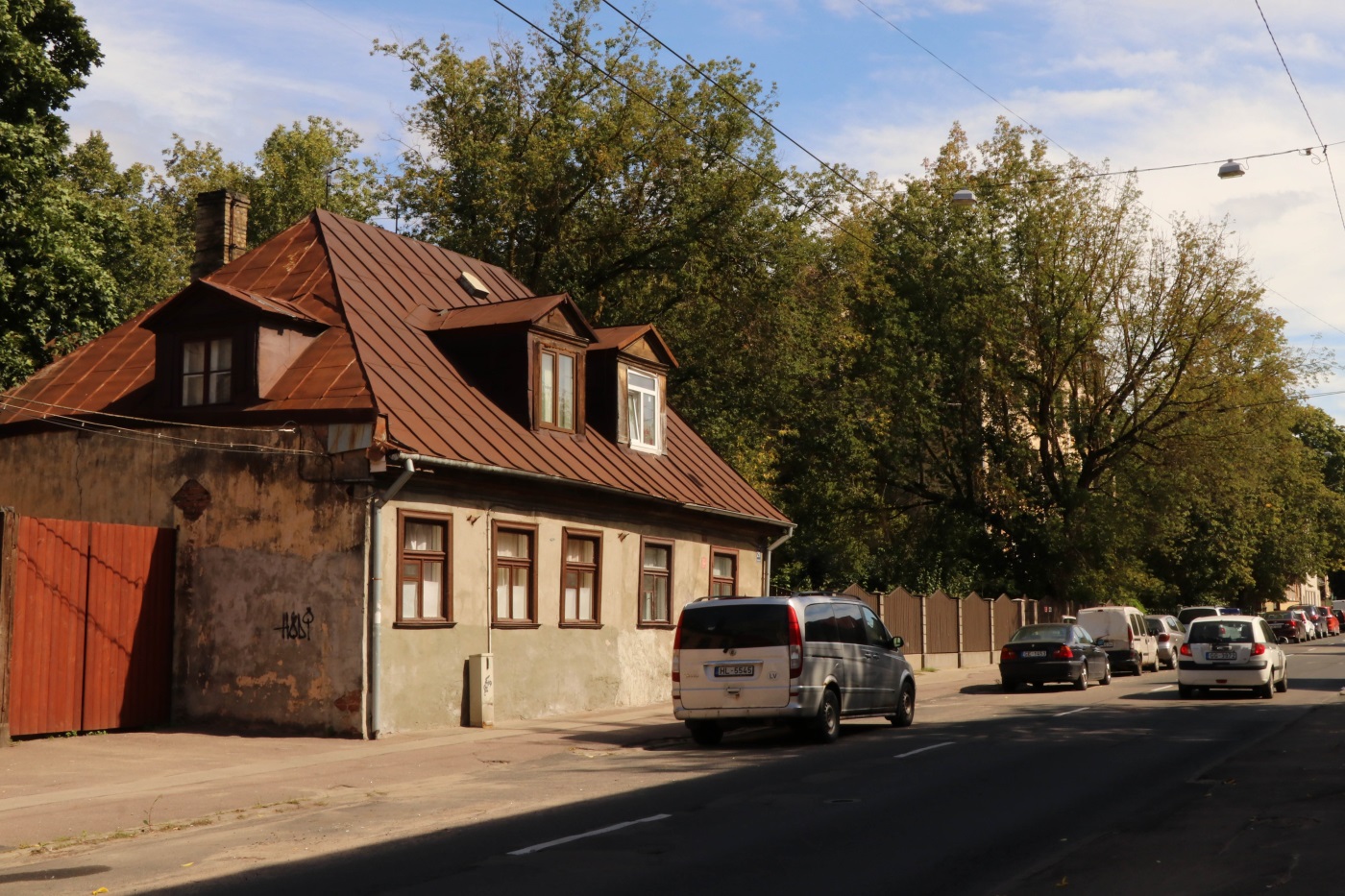


To kill that many people the Nazis began executions right in the morning. People undressed, put their things in a box, after which they were shot and thrown into a common pit. The wounded tried to crawl out of the pits, but by evening all the victims brought into the forest were killed.
4,000 people remained in the ghetto, and its territory shrank. So the Big Ghetto became the Small Ghetto.
After the mass execution in Rumbula, Jews began to arrive in Riga from other occupied territories: other regions of Latvia, as well as from Poland and Germany. They were also divided into those who were able to work and those who were not. All able-bodied men were transferred to labor camps, and the rest were shot. Most of the executions took place in the Bikernieki forest, where between 35 and 46 thousand people were killed over three years.
By 1943, all remaining ghetto prisoners were transferred to the Kaiserwald labor concentration camp, located in the Mezaparks area. In 1944, most of the camp’s prisoners were sent to Stutthof, Buchenwald and Dachau.
When the Red Army advanced in 1944, the Nazis tried to hide traces of their crimes. To do this, Kaiserwald prisoners had to dig up corpses from holes in the Rumbula forest for their subsequent burning. At the end of the work they were also shot.
Despite the fact that some residents of Riga collaborated with the Nazis, there were also those who, risking their lives, hid Jews in their homes. Most of the Jews managed to escape only because they were given shelter. Of all the Riga Jews, no more than 200 people survived by the end of the war.
Museum
The Riga Ghetto Museum tells the story of the genocide of Latvian Jews from the beginning of the occupation to the end of the war. It consists of a street surrounded by fences with barbed wire, a residential building from those times and several halls with exhibitions.
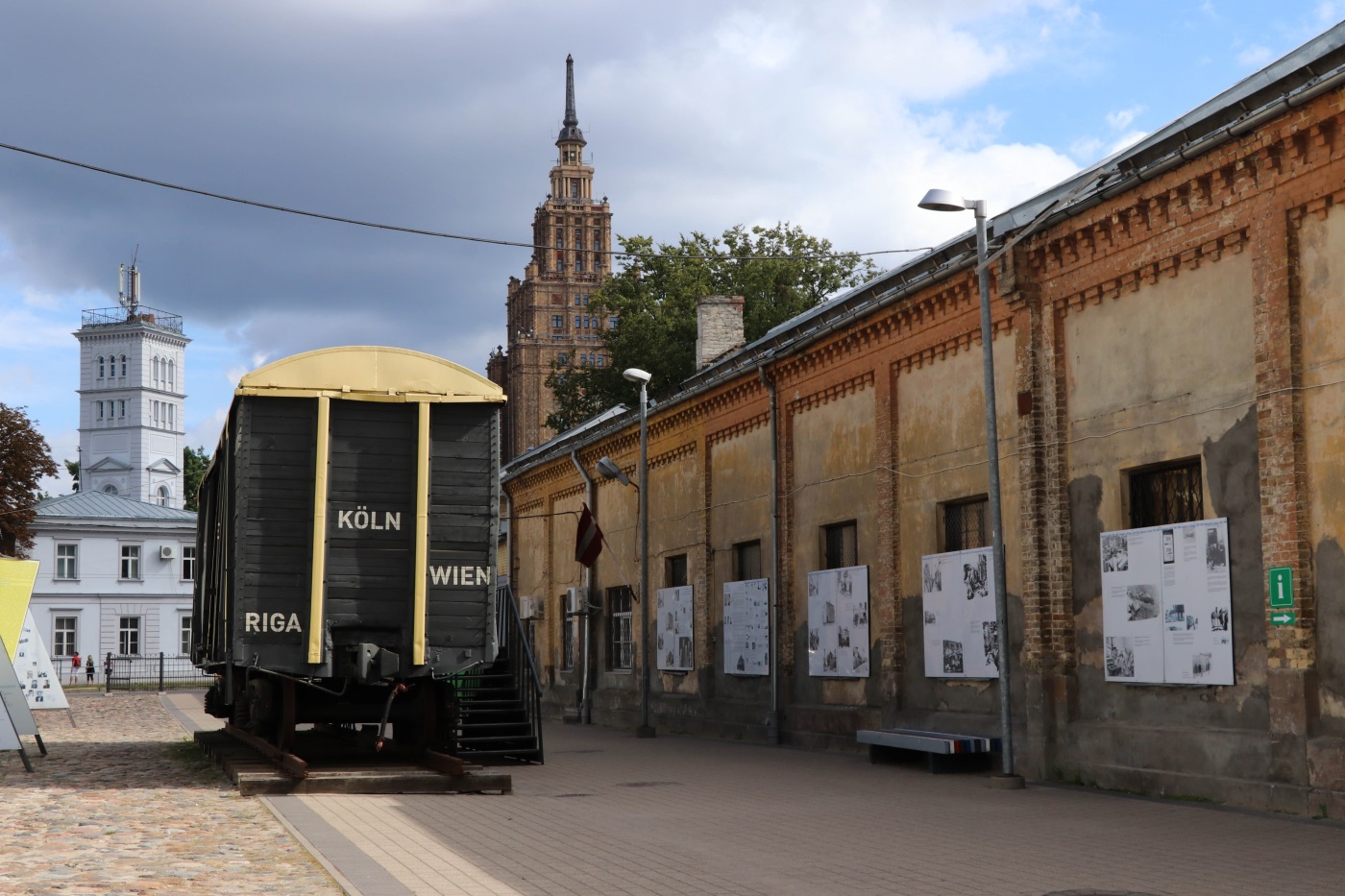
Maskavas iela 14A
Free entrance, donations are welcome.
One of the ghetto houses was restored and moved to the museum grounds. On the ground floor there are models of buildings destroyed during the war, including a synagogue that was located on Emīlijas Benjamiņas Street. On the second floor, an apartment from those times has been recreated. Each small room housed 13 people.




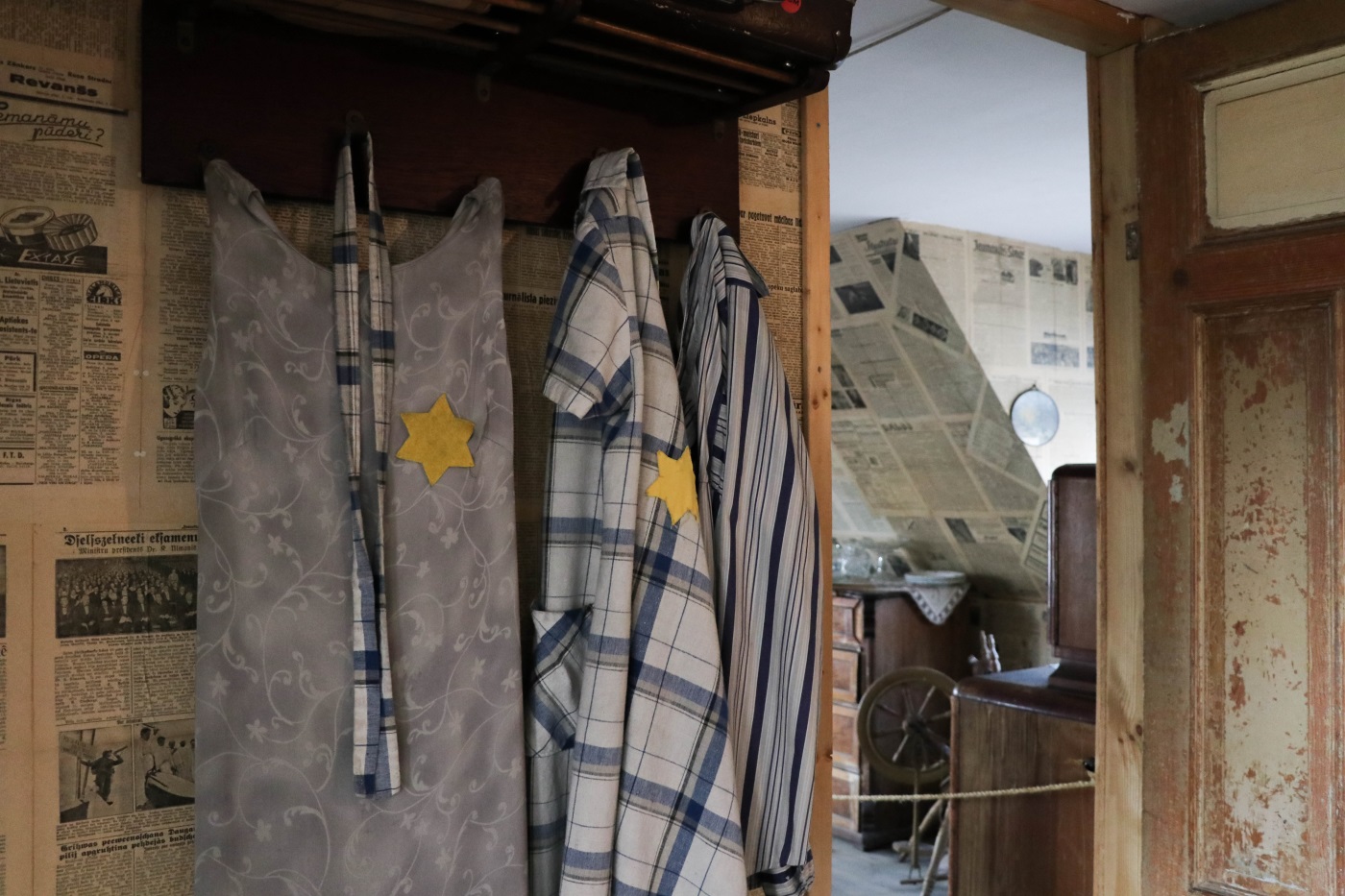

There is also a room with photographs and letters of people who were prisoners of the ghetto. Amazing stories of people who were able to escape are described on the museum’s website: rgm.lv


Along the street of the museum there is a stand with the history of the preserved and destroyed buildings of the Maskavas Forštate.
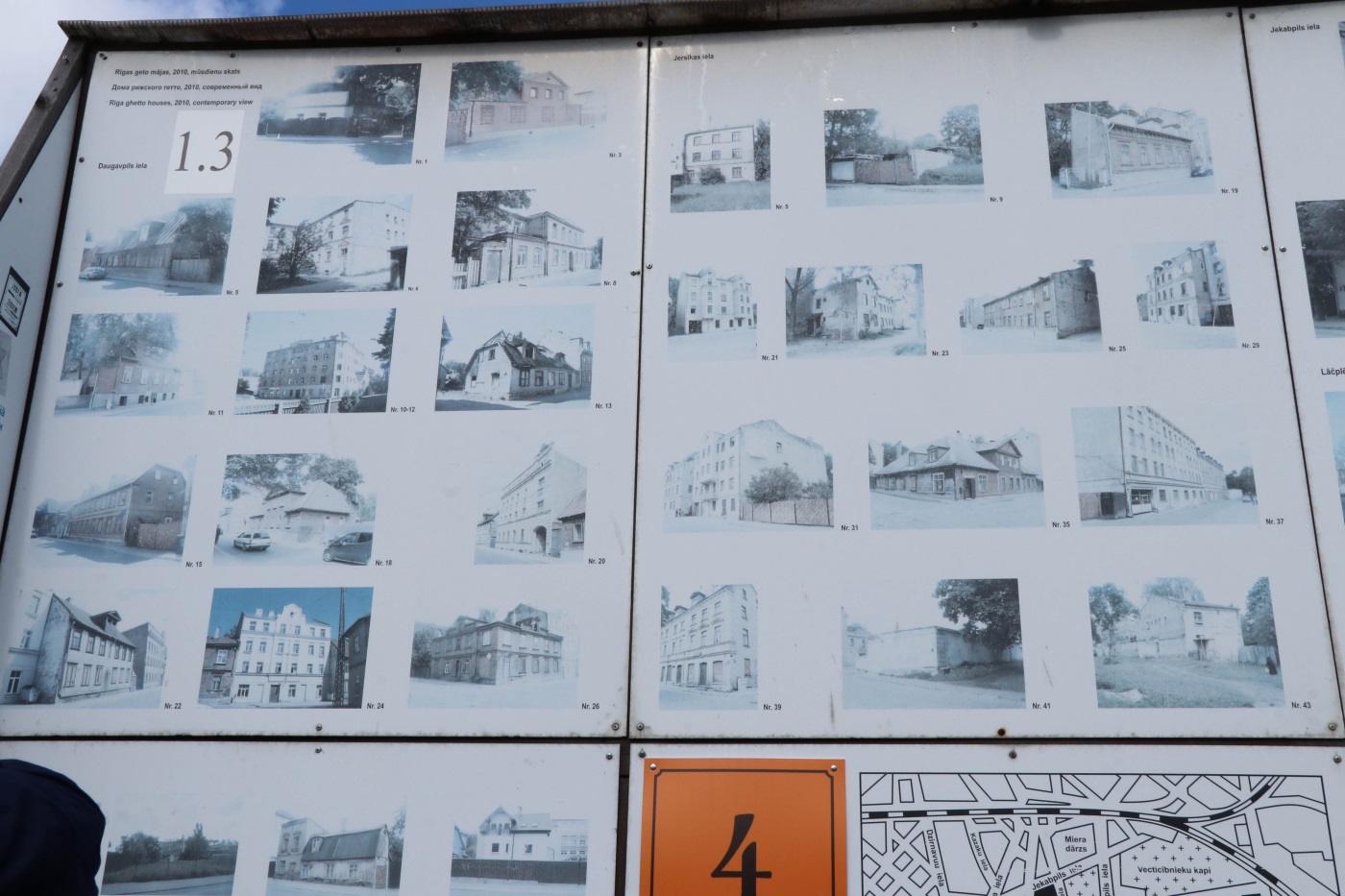

And also a wall of memory with the names of 70,000 people who died in Latvia during the World War II.

The former ghetto area has a very special atmosphere. More than 80% of the buildings of that time have been preserved, which makes it possible to judge the appearance of the ghetto and imagine what life was like for prisoners. It’s amazing that people still live in these houses and many of them don’t know about what happened in the area.




